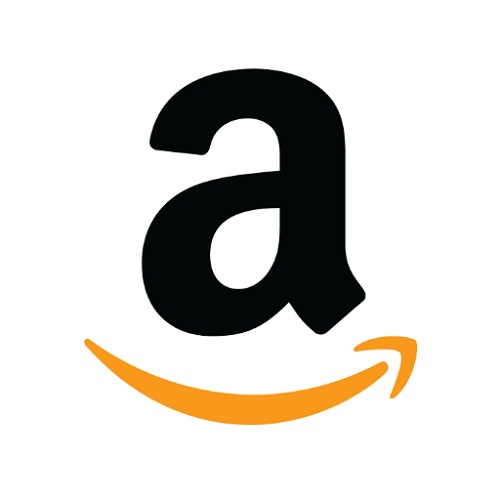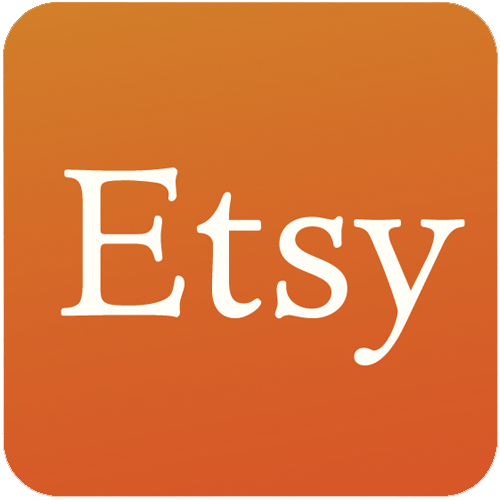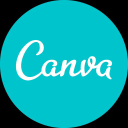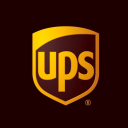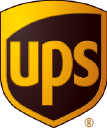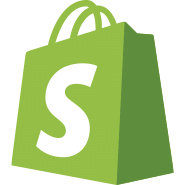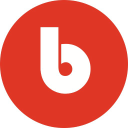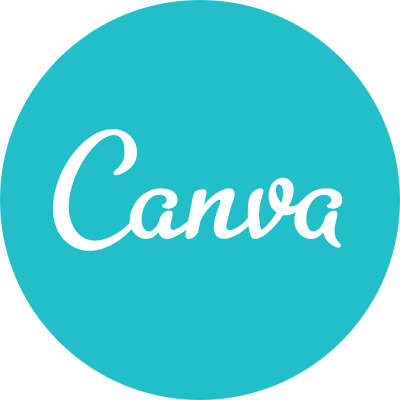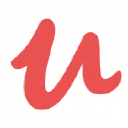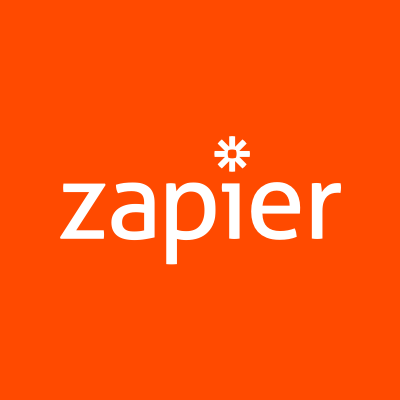How I Started A $300K/Year Business Making Cutting Boards
Hello! Who are you and what business did you start?
My name is Nils Wessell and I own and operate both Brooklyn Butcher Blocks and NilsWalker Designs.
My most popular product has to be our End Grain Walnut Butcher Block, available in 3 different sizes: 12x18, 16x20, and 18x24. Runners up would be our Walnut & Cherry Brick and Mortar Board and our Maple End Grain Cutting Boards.
Brooklyn Butcher Blocks typically grosses about $220K to $350K annually; NWD is very new and I see it as being a long-term project, so at the moment, it doesn’t gross more than a few thousand a years. That is how BKBB started, so I know that patience is a virtue here.

What's your backstory and how did you come up with the idea?
Right after I moved to Brooklyn in 2009, I had been working with Joel Bukiewicz, the knifemaker who founded Cut Brooklyn. In truth, I wasn’t very talented as a metal worker. Fortunately for me, I’m always working on new projects, and I dove into fine woodworking. I had a decent foundation in the craft thanks to my Uncle and my Grandfather, both of whom had a will to build during their summer vacations after a busy year of teaching.
School isn’t necessary. Use the internet, use YouTube, use Reddit. Use online courses, find local, affordable classes.
So I tried to make a few things out of wood, including cutting boards. Joel thought the work was good enough for the UnFancy Food Festival back in 2010. People and companies (including major buyers) reacted well to the work. I decided to follow the path of least resistance and eventually, Brooklyn Butcher Blocks formed (which I will refer to as BKBB at times).
I didn’t plan to start a business, I just let it grow organically and took one step at a time. When I was featured in the New York Times in January of 2011, that’s when I realized that there really was some opportunity here, but it still took a couple of years before I let go of that second job. Arguably, I could have left sooner, but I make decisions cautiously.
NilsWalker Designs was made to cover everything BKBB doesn’t--art, furniture, design, books, etc. Once upon a time, I would upload that to brooklynbutcherblocks.com but it doesn’t fit the voice of Brooklyn Butcher Blocks, so that’s why I chose to start NilsWalker Designs (or NWD for short). I am glad that I created this new outlet even though it means less exposure to these other projects.
Ultimately, BKBB gets to remain laser-focused, and NWD gets to feature my (even) more creative projects that can form organically like BKBB’s early years.
Take us through the process of designing, prototyping, and manufacturing your first product.
The structure of our butcher blocks was influenced by the architecture in New York--brick buildings and brownstones. The long grain cutting boards were made out of practicality because some customers thought that our end grain pieces were too heavy. The end grains have to be thick & heavy to remain strong, so our options were limited there. If we made the end grains too thin, then they’d surely crack at some point. This isn’t the case for the long grains, so we made them thin and light to offer something different.
Our larger sizes were an experiment in our production process. We have a small space, so it’s hard for us to keep so much inventory for so many products. So instead of keeping vast amounts of inventory of many different sized cutting boards, I decided to make very large countertops and store those. Online, though, we listed a few different-sized cutting boards. When orders came in, we would cut down the countertops. One countertop could be 5 large boards, or maybe 10 small boards, or 2 small and 5 mediums, or so on and so forth. This process helped me realize what we could keep in stock and what we could leave as made-to-order. This process helped determine which sizes to keep in stock.
This idea of, just making one thing that could become a few products, that’s influencing my thoughts on modular furniture and the manufacturing process for NilsWalker Designs. Could the legs & arms of a chair be used as the legs of a dining table or a side table? How could this single component or part make many different pieces of furniture?
So manufacturing and designing these products have become pretty intertwined and responsive. You learn one thing, and you build from that. You lay one brick, and then another, and another, and then you start another row. The key takeaway here is that I had to truly understand what my constraints were--in this case, my shop’s space. How do I make and sell so much with such limited space that can only hold so much? Modular design & manufacturing has been the best answer so far.

Describe the process of launching the business.
I had started making items in February 2010 and didn’t go “public” with my work until that summer at the Unfancy Food Fest in Brooklyn. Before starting BKBB, I had two part-time jobs. Once I started BKBB, I dropped one. It took until the spring of 2013 for me to drop the other part-time job.
I wouldn’t say that is when I went full-time because I was working at BKBB for at least 40 hours per week since 2011; my business always required me to work full-time. This was also the year where I became established due to some luck I had, like being featured in magazines, newspapers, websites, and more. That really put my business on the map like nothing else.
My friend, Jenn Sager, had designed a couple of early iterations of my website, which was really good because the first website--the website I designed--looked horrible even by 1998 standards. So Jenn really brought it up to snuff. Since then, I have gotten a little better as I hope the current website shows.
I financed Brooklyn Butcher Blocks on my own dime. This probably made the process slower and more painful in some respects, but I don’t regret it. I think it’s a good way to start because it’ll keep you frugal. It took me a while to understand and appreciate debt since I was brought up to fear debt. That said (and this is a note to any debt-fearing entrepreneurs), I love debt. It’s a huge help. I was lucky that Chase simply offered me a Business Line of Credit.
If you’re new to debt and you’re nervous about it, I highly recommend scouring YouTube and Instagram. Gurus may describe debt and the financial system quite poetically (they are marketers, not academics or professional accountants) but it’s a great place to start understanding the key principles. Much like debt, I also strayed away from gurus but I can’t deny that some of them are really good at teaching those of us who have trouble understanding.
While familiarizing myself with finance has been a great lesson, I think the biggest lesson has been focusing, which frequently involves saying “No” in so many words. I’ll tell a little story that shows how you can focus poorly and focus well. When I first started, I decided to offer the following sizes: 12x18, 18x24, and 18x36. What was this based on? Well, 12x18 is a good, minimum size for a small apartment. I foolishly just made the other sizes for no reason. I didn’t understand at the time that 18x24 is a pretty large board, and 36” was too huge to be practical for nearly all customers. I dropped the two larger sizes and decided to focus on the 12x18 and I would make custom sizes for larger boards.
Well, a new problem arose--people didn’t understand that I made custom. I might have put it up on the website, but that wasn’t enough. The way people tended to navigate my site meant they weren’t coming across the fact that we made custom cutting boards. It’s like you’ve laid out the plans for the roads in a new city, and you think you thought of everything, yet the signs and street lights you’ve put up confuse people enough that they end up at the grocery store instead of the stadium.
I would get requests with openers like, “So, do you make custom sizes?” At the time, I didn’t see the problem and just made stuff upon request. Doing this, again and again, the custom work started to pile up. That sounds like good news, but it actually presents a problem--you’re making other sizes that are annoyingly close to your standard 12x18, like 14x19 or 13x20. Keep in mind, you’re not getting these at the same time, they are a week apart, so you can’t even try to produce our specific design in bulk.
I must have gotten too used to the routine because only years later did it dawn on me… people are really just spitting out numbers at me. They want to upgrade from the 12x18, but the majority of them could probably care less whether that was 15x20 or 16x19--both are a “medium-sized cutting board” from their perspective. Then I asked myself, “Okay, but what sizes do I make--OH RIGHT. I’ve only been making custom pieces for years, and I also can see what’s popular on these totally new things called Google and Amazon.”
Anyway, offering new sizes really helped because it helped funnel these customers into 3 main camps of Standard, Medium, and Large cutting boards. Plus, it demonstrated that we do custom work and offer different sizes. Plus, those who really need or really want a custom size can expect their boards on a more reasonable timeline because we have more offerings that cover more customers. Everyone wins. Focus on what you offer, but make sure people would actually want what you’re offering. It’s an old rule, but if you’re at the helm and also stoking the engine, then it can be hard to see the full picture.
Since launch, what has worked to attract and retain customers?
Word of mouth, attending trade shows and other events, and finally, press coverage. Attending events early on is a necessity I think, at least for a product like mine. The average price of my blocks is about $180, so you have to educate people about what’s different: handcrafted, generous policies, practical advantages. Lastly, there’s an element of trust because you’re meeting the person who runs the business and who has a prominent role in production. Once you do that enough, press eventually follows.
Word of Mouth is its own vehicle; of course, you can have a strategy like offering referral links but at the end of the day, you’re not going to refer people to products that aren’t up to snuff. That’s what I mean when I say Word of Mouth is its own vehicle.
As for retaining customers, we don’t actually retain too many because our products are usually “one and done.” Our boards last a while, so people aren’t circling back too frequently except for gift purchases. That said, retaining customers is done via quality and even more importantly customer service. I used to only focus on quality when I first started. This could mean long lead times for our products as well as our custom items.
This was a bad move, and I should have prioritized Customer Service more in the beginning. I didn’t focus on it because I just wasn’t acknowledging its existence. I literally couldn’t see it because I was so obsessed with product quality. That was a big mistake. People expect lead times for truly custom work like our countertops, but nearly no one wants that for a product you can click-and-buy online, and that’s totally understandable.
These days, I focus much more on getting orders out quickly as possible, informing customers as to what is going on with their orders via social media. I handle any problems they’re experiencing asap. In the United States, I am convinced that no matter what business you’re in, you’re also in the Service Industry. Don’t ignore that.
Surprisingly, options like GoogleAds or Facebook Advertising have not worked. From what I can tell, I am simply too niche--we’re like a niche within a niche. I took a couple of classes in advertising last year, and I think I actually had a strong understanding of how Keywords and Negative Keywords work in GoogleAds.
According to the data I saw, I excelled compared to my competitors, but there were no signs of sales. “That’s odd,” I thought, but after thinking about the situation, I came up with an answer. I only offer 3 wood varieties at my store, but competitors offer dozens. It helps if your establishment can truly COVER that niche. And it helps you on GoogleAds because it means your ads can now be triggered by a greater range of searches.
For me, it’s hard to justify offering dozens upon dozens of wood options just to run an Ad Campaign, so right now, I’m working more on SEO. That has offered better results. And if you’ve had a different experience, and you think I’m wrong, then please email me: nils@brooklynbutcherblocks.com
Amazon and Etsy are fine platforms, but I greatly prefer Shopify. For many, I can see that Shopify is difficult because you really have to handle your SEO to rank well on Google. Here’s a little tip: being a local, niche business helps. My issue with Amazon and Etsy is that as soon as someone enters a query, the first thing a potential customer sees is another 20 items that look like yours.
In the crowd of artists and artisans, I think there is not nearly enough discussion around business, accounting, and taxes. You should become acquainted with the concepts so you can discuss them with your accountant or whomever. It will mean that the time you spend working is less creative in nature, but if you’re here to sell, then that’s the deal.
Etsy also seems like it’s starting to sell its brand capital; while there are still plenty of makers, you also see people just buying Chinese-made items in bulk, and reselling with those items with laser engravings. Maybe the line I’m drawing is ultimately arbitrary, but this seems outside of the “spirit” that Etsy was trying to cultivate. Now, on the other hand, if I saw Walmart providing this kind of service, I would be impressed, but that’s because Walmart’s image is so different than a place like Etsy’s.
When it comes to Amazon, I don’t really want to give them more information than they already have on “what sells”, so that way they can find a manufacturer, undercut the seller, and stick an Amazon Basics logo onto the product. This tactic is as old as retail but if you’re doing market research for Amazon, then shouldn’t you be paid for that? Shouldn’t you work that into your pricing? Well, Amazon’s marketplace can make that difficult when you also have people underselling each other so quickly.
All this said I do like Amazon and Etsy, and I do sell on them. I want to focus more on these in the future, but I want to find a way to better use the exposure--perhaps I can include postcards with discounts for my own website in Etsy shipments, or I could advertise our Newsletterin Amazon shipments, etc.
How are you doing today and what does the future look like?
I was fortunate enough to be profitable since the first year I started. It took a lot of tweaking through the years, but I have greatly improved our margins since my first year. That’s been important since customers don’t return too frequently. As a business model, I’m sure that seems concerning to most, and it is cumbersome; however, we literally make products that are intended to last decades, so I consider it a sign of success. It’s actually a great indicator that we’re doing really well and doing right by our customers. People aren’t going to come by every couple of months to buy a $200 cutting board. Some customers return to buy cutting boards as gifts for others after loving their own boards.
We don’t use ads much and instead rely on organic results. We end up with about (on average) 9500 visits with people spending a few minutes on the website. Over the past couple of years, this has been growing. We occasionally share discounts in our Newsletterthat has over 12,000 subscribers; however, I make sure to not abuse this tool.
Again, our business is so specific and so niche that I don’t want to inundate people with emails and annoy them away before they get access to one of our promotions. E-mail is a great marketing tool. While I haven’t put in the work to speak from my own experience, I would think that YouTube shares a lot of benefits with e-mail marketing.
Most of our sales are through Shopify, though we do get a few orders a month through Etsy and Amazon. Looking at the bottom line, you may not see a lot of growth. Sales have largely kept stable YoY but we have gotten rid of products to focus on what we’re good at. Even better, we have improved margins significantly in the past two years.
This year, my goal is to establish growth for the future. The current plan is to introduce Kitchen Islands and see how customers respond to that. An area that I’d really like to improve is figuring out how to simply reach customers or provide a service that’s topical and relevant--give us a reason to reach out to them more. It’s a little challenging covering the cutting board regularly. I must admit that this area is my greatest weakness. I can build something new, come up with a production plan, but drawing new people in solely over the web is hard.
A customer recently told us that vendors in San Francisco are very familiar with our brand, but no one carries our goods. We might be introducing Brooklyn Butcher Blocks to San Francisco, but I need to set up a low-cost trial run to see how it goes. Who knows?! I don’t! But that’s how you learn.
Through starting the business, have you learned anything particularly helpful or advantageous?
I started my business pretty organically with little forethought a decade ago. I wouldn’t recommend this strategy, this idea of “following your passion.” When you run a business, you’re actually one of the lowest priorities. It’s everyone else that matters--your customers, your business partners, etc. Ironically, if you focus on your own passion without considering how your passion will help or benefit others, it becomes harder to do something that resembles your passion. For the record, setting yourself as a “low priority” doesn’t mean you treat yourself poorly. Instead, you design your business and what you offer people around something that you can do well. For instance, I offer a custom butcher block in 6 weeks without installation services for $500. I don’t offer a custom butcher block in 5 weeks and 3 days with installation services for $499.
I’ve had my share of missed opportunities too. Shark Tank reached out to me a few years ago, and I was reluctant to chase that full force. I thought that I wasn’t really ready, and I didn’t know how to portray myself and the company. I suppose in that respect, it wasn’t a mistake, but then the mistake was simply not being prepared for an opportunity like that. To some extent, it doesn’t matter though--the exposure is exposure. Before that, I had an opportunity to sell with Williams-Sonoma when I had just started Brooklyn Butcher Blocks. Different situations, but similar problems. I just wasn’t prepared. I think this ended up being a happy accident though. I was too green to work with someone else. It required me to build BKBB on my own. As a result, I have a pretty good margin and a strong direct-to-customer relationship that I wouldn’t have had if I sold through another party.
Besides that, I would just recommend being patient and finding your focus.
What platform/tools do you use for your business?
I love Shopify. It’s just a great product. I don’t think I’d consider anything else. Shopify’s App feature is great for customizing your store. I use Infinite Options for customizations, the Pinterest Appso my products can get engagement there, Privyfor PopUps and syncing sign-ups, ShipStationto handle shipping all of my orders (it’s an absolute must), Shop Instagram & UGC to display my Instagram at the bottom of the page, and Spin-a-Sale. Spin-a-Saleis a specific pop-up that gamifies Email Collection. Enter your email address, hit the circle so it spins, and maybe you’ll reveal a discount code for your order. I always thought that these things never worked, but I have seen about 10x the signups.
Other tools I love: Excel, Canva, DocFly, the entire Google Suite (especially Google Drive and Gmail), Amazon Photos (with the auto-upload feature set to on). I also like Google Chrome with apps like Session Buddy (saves Tabs), Lightshot(for when the Screenshot feature won’t work), FocusMe(block social media site so you can focus), and ClearBit Connectand the Lite version(it’ll provide some background information on people who email you in Gmail, ie-where do they work, what’s their social, etc).
This is a long list, so to put it simply: I highly recommend Amazon’s & Google’s Cloud Services for easy access to files, and use Google Chrome & GMail as your web browser--you’ll find a lot of benefits that Google offers when use both together while also adding apps into the mix.
What have been the most influential books, podcasts, or other resources?
A big benefit to your business involving a lot of physical work is that you have a lot of time to cram information into your head. And if you get distracted, you have plenty of time to go back, and relisten. Along the way, I listened to podcasts like Masters in Business, Without Fail, and Masters of Scale. I also listen to a lot of YouTubers, like Graham Stephen and Meet Kevin who primarily talked about Real Estate (though they’ve both branched off into other topics, ie-stocks, investment, etc).
Their teachings helped me understand other financial concepts because they were discussing something physical, something you could touch. Ideas that seemed abstract to me became more physical. I also listen to ClearValue Tax, MinorityMindset, and Tommy Bryson.
Tommy Bryson’s a personal favorite. He is one of the few YouTubers who didn’t come by their wealth via Real Estate in California, he did it as an accountant in the Bronx. I am inclined to trust the judgment of an accountant. You might think that business owners are the people to talk to about business, but here’s the thing: most of us only know our own business. Accountants are dealing with multiple businesses. In their language of numbers, they see every gear turn. My rule: get an accountant, email your accountant, call your accountant, see your accountant.
My focus has been more business-oriented than artistic or artisanal topics because (in comparison) I felt like I already had that in spades. But, I don’t want to sound like a total square listing off books like “Accounting: The Journey into Assets and Liabilities, 5th Edition” (that’s not a real book, I think). I have a couple of books that cover the oeuvre of woodworkers I really like.
The two biggest names on that list are Wharton Esherick and Wendell Castle. Their woodwork is amazing and unique, and I feel so fortunate to have seen Castle’s work at the Museum of Art and Design a few years ago. He was using CNC technology to carve out panel glue-ups before it was so common. And the shapes he made were so interesting--you didn’t really see woodworkers making such unusual shapes. The same goes for Esherick.
Advice for other entrepreneurs who want to get started or are just starting?
School isn’t necessary. Use the internet, use YouTube, use Reddit. Use online courses, find local, affordable classes. School can be costly, and that means it already sets you back, so it better has a good Return On Investment. That said, just because school isn’t necessary doesn’t mean that it isn’t right for you. I would just make sure to look at what graduates end up doing, how much they make, how long it took for them to pay off their education, and lastly, and most importantly, is it worth your time? Even as a young student who may not know what their calling is, your time is worth something. Is what you’re doing now how you want to spend that time?
In the crowd of artists and artisans, I think there is not nearly enough discussion around business, accounting, and taxes. You don’t need to be an expert, and at the end of the day, I don’t think you should try to do your own taxes, but you should become acquainted with the concepts so you can discuss them with your accountant or whomever. It will mean that the time you spend working is less creative in nature, but if you’re here to sell, then that’s the deal.
You have to make sure you’re making money, and that you set cash aside for taxes. The rest of this paragraph should ultimately be a discussion with your accountant but here is what I wish I had done years sooner than I did. Just to be clear: I am not an accountant, and so instead I am just conveying what I would have done if I were starting all over again from the beginning.
A lot of this information is available elsewhere, but I want to cover it regardless. After I was profitable for a few months, I wish I had gotten an LLC immediately, or maybe an S-Corp from the get-go. Then I should have set up a SEP-IRA as well as a Roth IRA. I could have put $6000 in a Roth IRA every year without getting taxed on that money for a while. Again, an accountant can give you the details. I could have stacked my SEP-IRA on top of that; as an LLC I could have been putting away 20% of my profits from the beginning (25% as an S-Corp!)--again, without getting taxed on those contributions to my SEP.
So, let’s say I made 100,000 as an LLC. Instead of getting taxed on that 100,000, I’d put away 20,000 and I’d be taxed on that 80,000 instead. That 20K in the stock market could have been working for me while you’re at work--it’s almost like you’re working two jobs at once, but one is passive. And remember, you can combine that SEP with your Roth, so that’s a total of 26K, or 31K if you’re set up as an S-Corp.
I strongly support people starting a business, even if it’s their side gig for the long haul. It’s a great learning experience, and there’s sort of a feedback loop where you grow the business and the business helps you grow as a person. You’ll have difficulties to be sure, but oftentimes it is those challenges are that help you grow. And there are resources available to help you, including the Small Business Administration. They offer many different kinds of loans, including loans exclusively for Coffee Shops and Laundromats. That’s pretty niche. And it’s just the tip of the iceberg of how they can help.
Are you looking to hire for certain positions right now?
We aren’t currently hiring for any FT or PT positions right now, but we may have a few gig jobs available. Let's touch base if;
- You have the skills and/or the experience to video content on social media platforms
- You have extensive experience in syncing Shopify and Shipstation
- You know how to set up automated replies for commonly asked questions
- You’re an engineer who could help design a sanding machine
You can reach me at nils@brooklynbutcherblocks.com
Where can we go to learn more?
If you have any questions or comments, drop a comment below!

Download the report and join our email newsletter packed with business ideas and money-making opportunities, backed by real-life case studies.

Download the report and join our email newsletter packed with business ideas and money-making opportunities, backed by real-life case studies.

Download the report and join our email newsletter packed with business ideas and money-making opportunities, backed by real-life case studies.

Download the report and join our email newsletter packed with business ideas and money-making opportunities, backed by real-life case studies.

Download the report and join our email newsletter packed with business ideas and money-making opportunities, backed by real-life case studies.

Download the report and join our email newsletter packed with business ideas and money-making opportunities, backed by real-life case studies.

Download the report and join our email newsletter packed with business ideas and money-making opportunities, backed by real-life case studies.

Download the report and join our email newsletter packed with business ideas and money-making opportunities, backed by real-life case studies.

